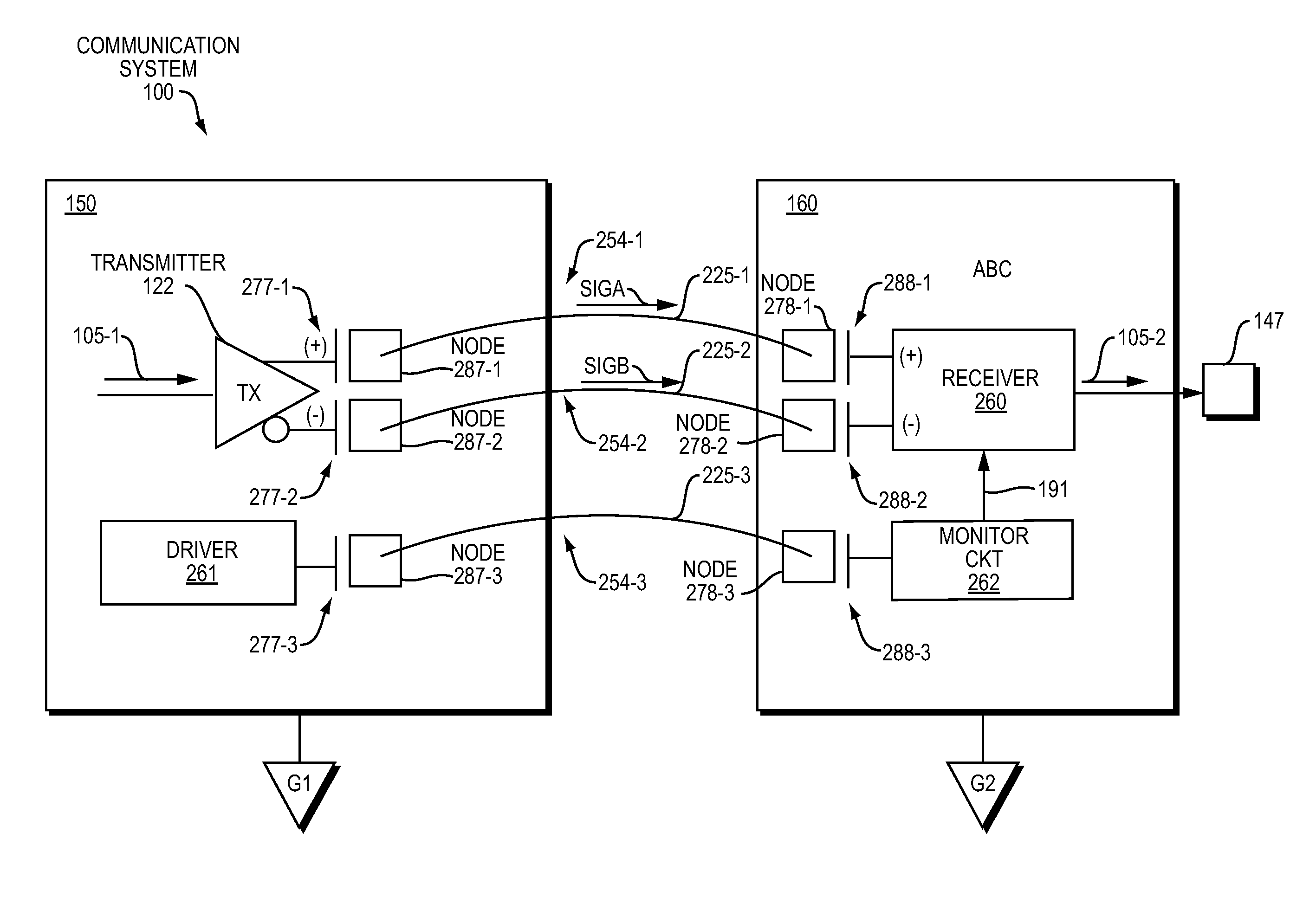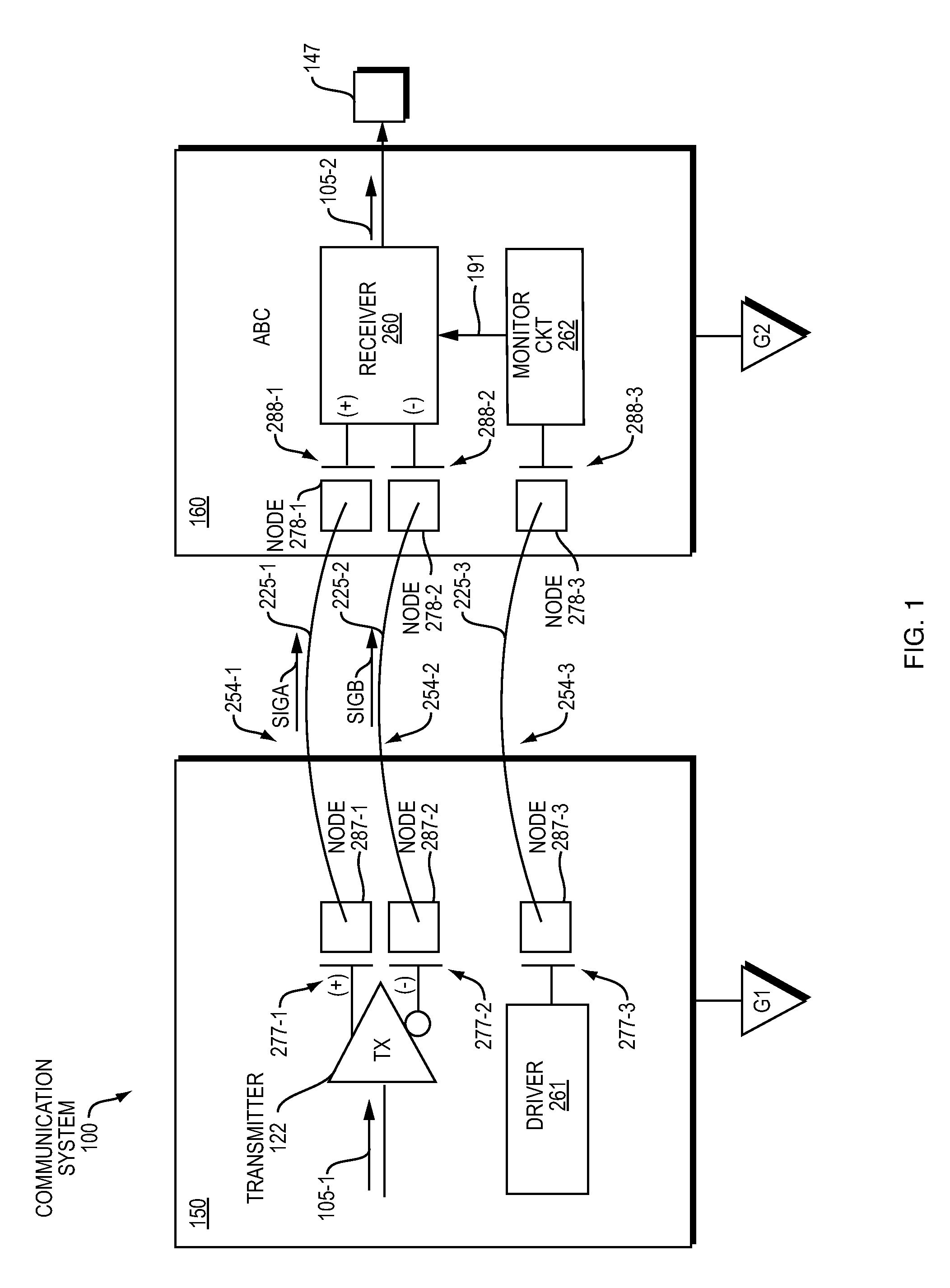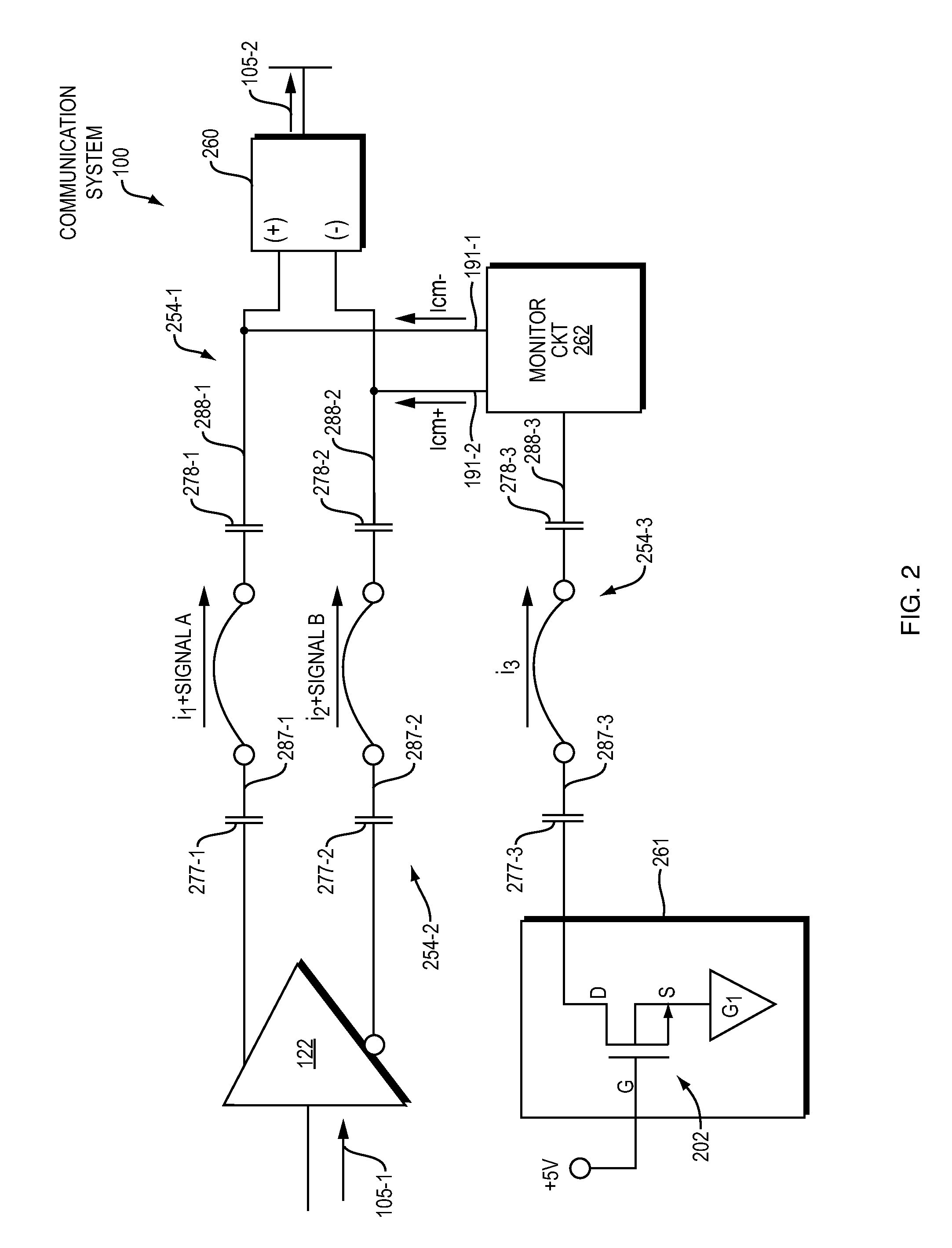Methods and circuitry to provide common mode transient immunity
a common mode and transient immunity technology, applied in the field of methods and circuitry to provide to achieve the effect of accurate cancellation of corresponding and higher common mode transient immunity
- Summary
- Abstract
- Description
- Claims
- Application Information
AI Technical Summary
Benefits of technology
Problems solved by technology
Method used
Image
Examples
Embodiment Construction
[0029]As further described below, embodiments herein include a replica communication path and monitor circuit to provide increased common mode transient immunity. As its name suggests, the monitor circuit monitors the replica communication path and produces an adjustment signal (common mode transient adjustment signal) to cancel presence of a common mode transient signal in one or more other communication paths conveying data signals.
[0030]Now, more specifically, FIG. 1 is an example diagram of a communication system according to embodiments herein.
[0031]As shown, communication system 100 includes transmitter circuitry 150 and receiver circuitry 160. In one non-limiting example embodiment, the transmitter circuitry 150 is fabricated on a first semiconductor die; the receiver circuitry is fabricated on a second semiconductor die. The transmitter circuitry 150 and receiver circuitry 160 are coupled via corresponding communication links 225. During operation, communication links 225 (s...
PUM
 Login to View More
Login to View More Abstract
Description
Claims
Application Information
 Login to View More
Login to View More - R&D
- Intellectual Property
- Life Sciences
- Materials
- Tech Scout
- Unparalleled Data Quality
- Higher Quality Content
- 60% Fewer Hallucinations
Browse by: Latest US Patents, China's latest patents, Technical Efficacy Thesaurus, Application Domain, Technology Topic, Popular Technical Reports.
© 2025 PatSnap. All rights reserved.Legal|Privacy policy|Modern Slavery Act Transparency Statement|Sitemap|About US| Contact US: help@patsnap.com



